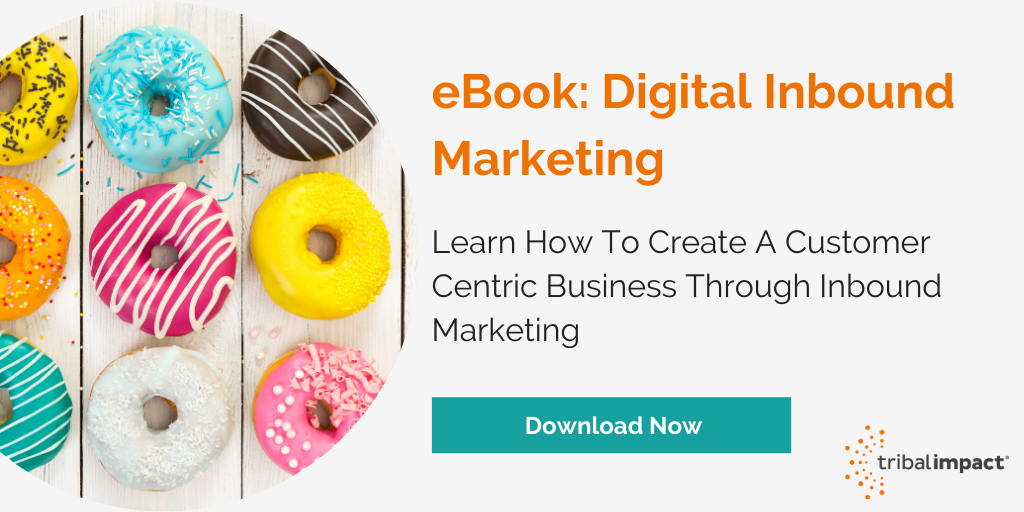When creating content, it's essential to have pieces that fill different needs. That's where each stage comes in. Gaps in these stages can lead to a broken funnel, which leads to confusion, which means fewer conversions.
But what content do businesses need to create for the different stages of inbound content marketing? And why is each stage important? Let’s take a look.
Awareness
Awareness content attracts people to the business. That means lacking it makes it harder to bring new people into the pipeline.
However, awareness content that's written in a silo, that doesn't tie into a wider marketing strategy, is just as useless as no awareness content at all.
Awareness content is what draws people in. It sits at the very top of the funnel. Because of this, people won’t know anything about the brand. That means any brand or product mentions should be kept to a minimum.
Getting too salesy at this stage is a huge turn off to anyone arriving to the site for the first time. It’s akin to a car salesperson coming up to you and pushing for a sale as soon as you enter the forecourt.
Content in this stage should focus on big-picture questions, such as problems faced within the industry. For example, a marketing agency could write about Google's latest algorithm update, or a HR company could cover remote working during the coronavirus.
All topics should be related to common problems that customers and prospects face to ensure that it guides them down the funnel.

Consideration
This stage is where a prospect is familiar with the company or product but isn't sure if it’s for them. They’re weighing up their options and deciding if the product or service should make it to their shortlist.
Here, businesses must nurture their prospects and demonstrate the help they can provide.
Content here should show the benefits of the product or service, but not be pushy or salesy. The purpose of content here is to establish the benefits of the product or service and how it’s different from competitors.
One of the key elements of the consideration stage is gated content. This can include things like whitepapers, checklists, and guides. In exchange for this content, people must join the company's mailing list.
When someone gives a business their email address, they become a warmer lead. This means they’re more likely to convert but probably haven’t made a decision yet. Continuing to offer value and show the outcomes using the product or service can make is really important here.
Consideration content doesn't always have to be gated, though. It could be a product review left on another website or blog, or a case study from an existing customer.
Decision
At this stage, the company has made it to the shortlist. But the prospect hasn’t paid just yet – they’re on the cusp of making their final decision.
Sales and marketing intentions need to align here more than at any other stage. Marketing content done right can work as a 24/7 salesperson, guiding people down the funnel and from the decision stage to the purchase page.
Content in the decision stage should focus on the company or product. What are the benefits and outcomes of purchasing? What problem does it solve? How will the prospect’s life be different in a week, six months, or a year from now, if they purchase? What about if they choose not to instead?
Focusing on the outcomes of purchasing over the features or benefits gives prospects more tangible examples of the success they could achieve.
Knowing the buyer persona's needs and expectations really helps here, because it ensures the outcomes that are demonstrated align with what they want to achieve.
A bold – but often effective – move for this stage is to create content around common objections. This gives salespeople plenty of go-to rebuttals when facing prospects’ objections. It also helps to engage passive prospects who are less likely to want to connect with a salesperson but who are still interested in the pros and cons of the product or service.
Product walkthroughs and customer testimonials can also help to nudge people over the finish line.

Create Content For All Stages
For an inbound approach to be successful, businesses must create content for each stage of the funnel. Otherwise, prospects will have unanswered questions. These gaps lead to uncertainty, which means they’re more likely to take their money elsewhere.
Regardless of what stage someone is at, it’s important to address their needs. Doing so shows that the company is aware of their problems. This creates a faster connection between the business and the prospect, meaning prospects are more likely to choose the business over a competitor because it's more in tune with how they feel.
Content marketing is all about building and nurturing relationships. It guides people down the funnel gently, without the need for pushy sales tactics or someone having to be online all day and night. It saves marketers, customer service representatives, and salespeople time because they don't have to deal with the same questions over and over. Instead, they have time to really focus on creating content and relationships that can grow the business in the short and long term.
Content marketing is one way to humanise a brand. It creates a connection with prospects without them needing to speak to a sales representative. Some people may not talk to anyone at all before purchasing. If the content strategy is done right, this doesn't matter, because there'll be content to answer every question at every stage of the process.
Creating content for every stage helps businesses to attract, nurture, and convert prospects. It can be done in a faster way, and even on days when the office is closed. It's a low-touch way that develops a relationship with prospects before they've even paid. This leads to stronger connections that form lower churn rights and higher customer advocacy.

